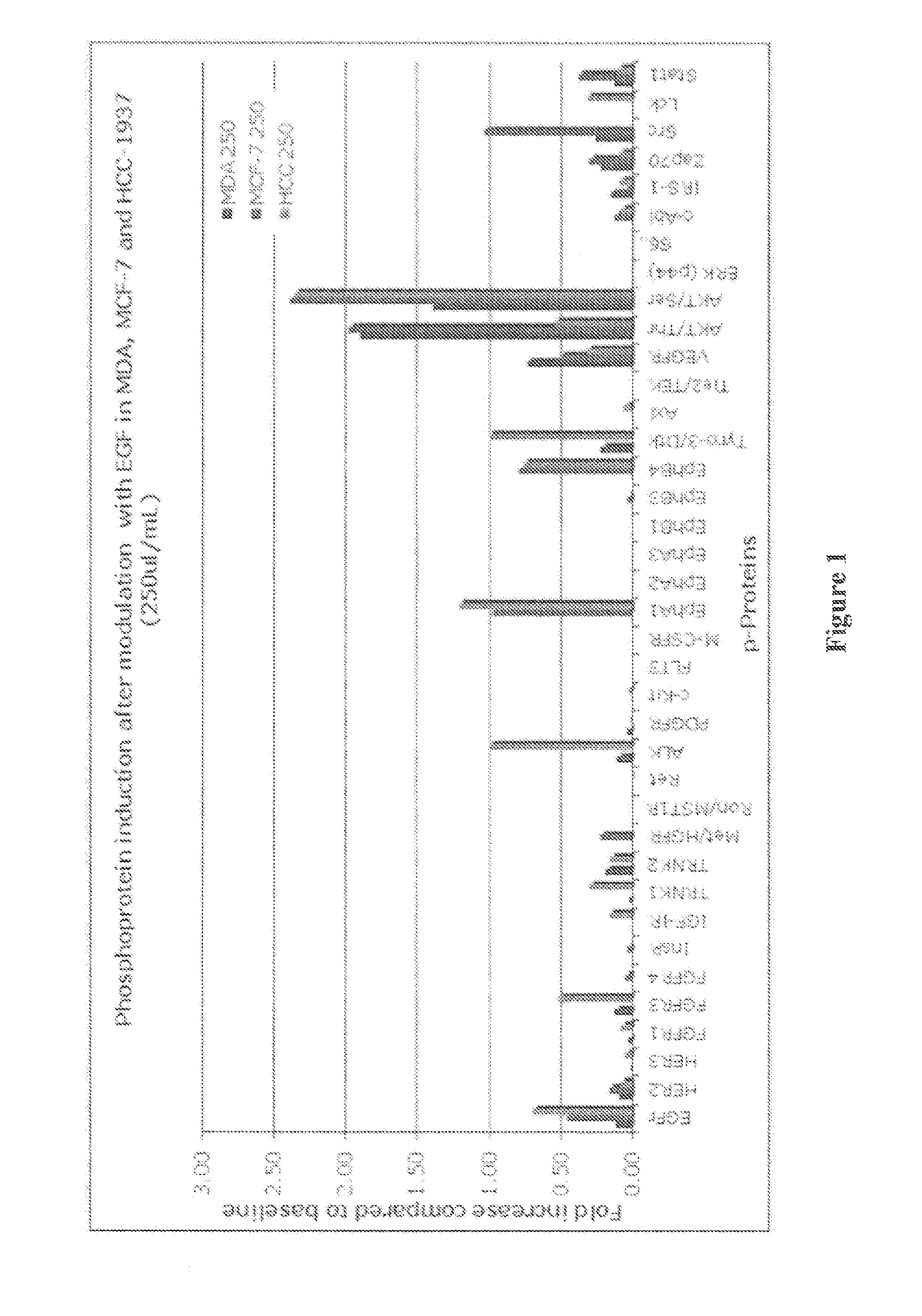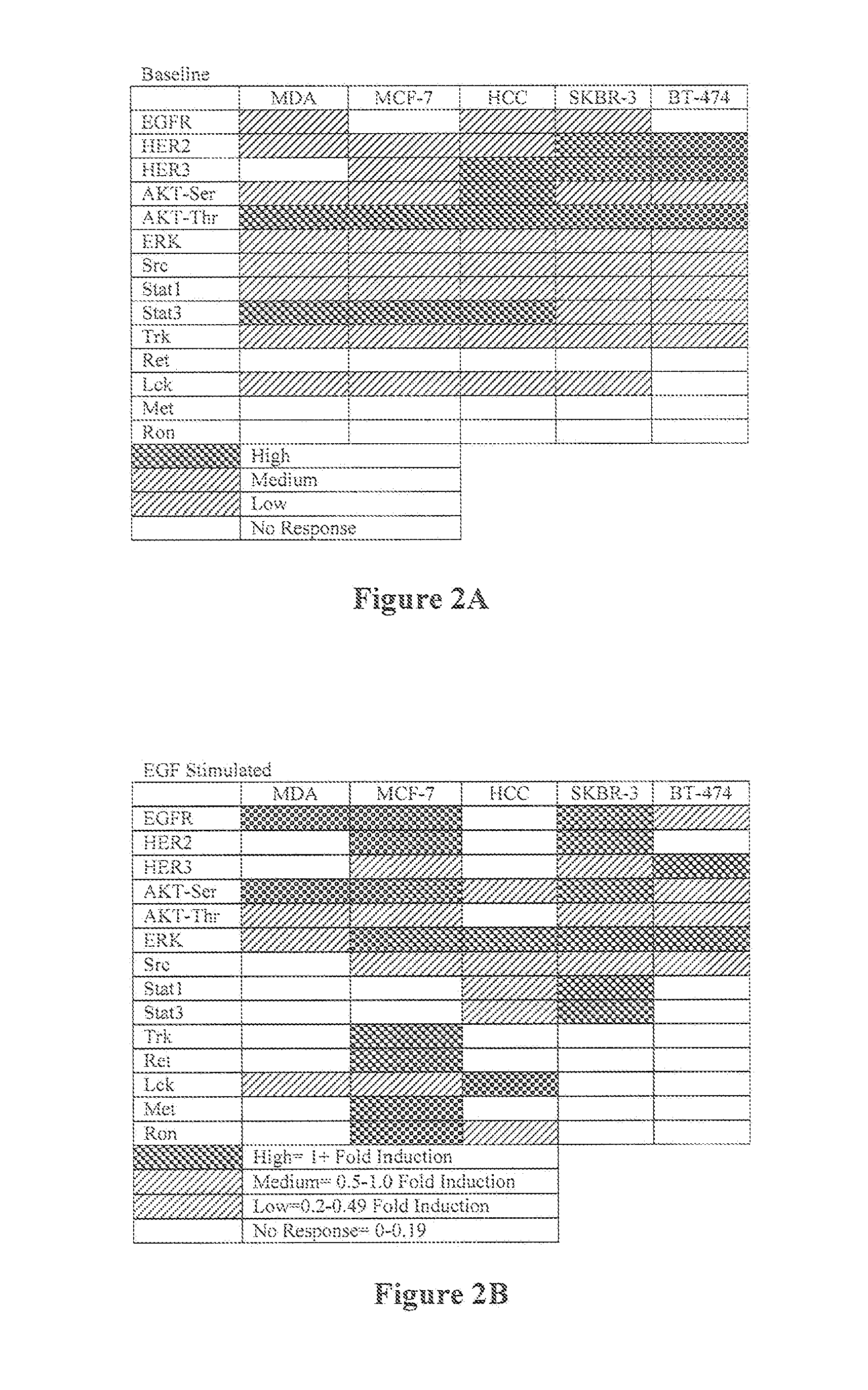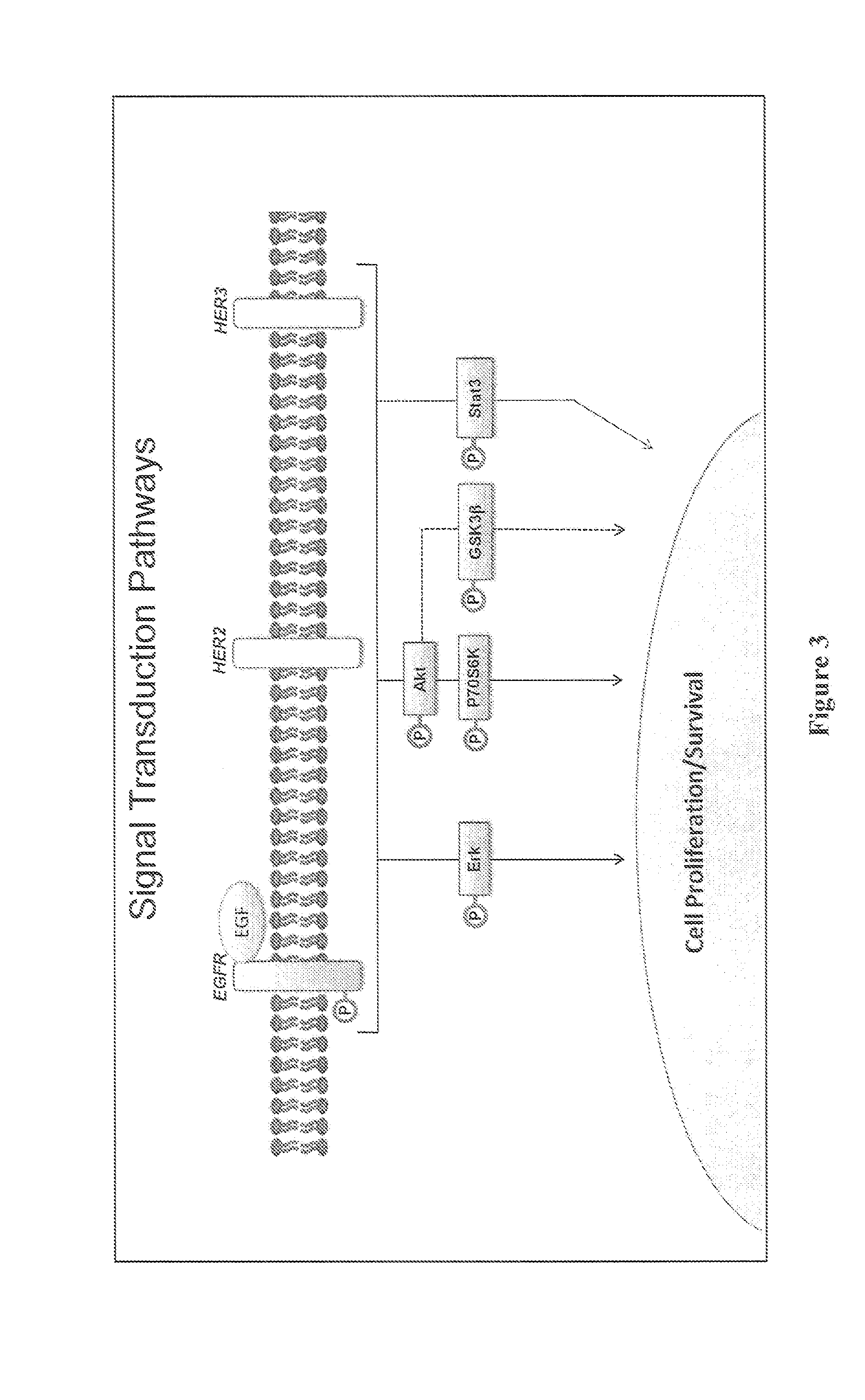Compositions and methods for prediction of drug sensitivity, resistance, and disease progression
- Summary
- Abstract
- Description
- Claims
- Application Information
AI Technical Summary
Benefits of technology
Problems solved by technology
Method used
Image
Examples
example 1
Functional Signal Profiles of Phosphoprotein Array
[0134]FIG. 1 is a bar chart that summarizes data derived from a phosphoprotein array that contains 29 different phosphoproteins. The data are derived from 3 breast cancer cell lines that have been treated with EGF. The bars represent up-regulation of the phosphoprotein relative to the basal state without EGF stimulation. Note that these cell lines display very different sets of up-regulated phosphoproteins upon EGF stimulation giving information about the signal transduction networks of these cells.
[0135]Using raw data similar to that provided herein, an algorithm will be used to create a “profile” for each tumor. For example, the level of each individual phosphoprotein will be assigned a “score” between 0, low, medium and high, based on previously determined cut values. Then the scores from each analyzed protein within a tumor will be assembled into a group termed the functional signaling profile. Each profile will provide informati...
example 2
Functional Stratification of Breast Carcinoma Cells Enables Predictive Therapeutic Strategies
[0136]Most targeted therapies still lack effective predictive biomarkers. A major limitation of the existing classes of biomarkers is the lack of functional information about the signal transduction networks targeted by molecularly targeted drugs. The present invention provides a functional assay based on ex vivo biomarkers produced by live tumor cells. The profile is elicited by short-term epidermal growth factor (EGF) stimulation in the presence or absence of a MEK inhibitor. The resultant changes in signal transduction phosphoprotein levels are used to create functional signaling profiles that stratify tumor cell lines into functional groups. This functional signaling profile is feasible by an automated platform that is amenable to tumor biopsy processing.
[0137]Breast Cancer Cell lines (BT-474, MDA-MD-231, SKBR3, HCC-1937, BT-20, T47D, MCF-7, BT-549) are propagated and removed from the pl...
example 3
Stratification of Breast Cancers Based on Functional Phosphoprotein Signaling Profiles Elicited from Live Tumor Cells
[0140]Abnormal signal transduction networks are frequent targets of existing and emerging molecularly targeted agents (MTAs). Unfortunately, most predictive biomarkers to guide therapeutic selection are based on indirect assessment of signal transduction through DNA mutations or transcriptional profiles rather than dynamic assessment of signal transduction proteins themselves. Classification of breast cancer based on functional signaling profiles derived from a set of signaling phosphoproteins induced upon growth factor stimulation of live breast cancer cells is likely to provide a more accurate system for MTA selection than indirect methods utilizing fixed or frozen tissue.
[0141]This example provides demonstration for stratification of multiple breast cancer model systems based on functional signaling profiles elicited from live tumor cells in response to ex vivo sti...
PUM
| Property | Measurement | Unit |
|---|---|---|
| physical | aaaaa | aaaaa |
| chemical | aaaaa | aaaaa |
| mass spectrometry | aaaaa | aaaaa |
Abstract
Description
Claims
Application Information
 Login to View More
Login to View More - R&D
- Intellectual Property
- Life Sciences
- Materials
- Tech Scout
- Unparalleled Data Quality
- Higher Quality Content
- 60% Fewer Hallucinations
Browse by: Latest US Patents, China's latest patents, Technical Efficacy Thesaurus, Application Domain, Technology Topic, Popular Technical Reports.
© 2025 PatSnap. All rights reserved.Legal|Privacy policy|Modern Slavery Act Transparency Statement|Sitemap|About US| Contact US: help@patsnap.com



